|
USCGC STORIS
Storis is
a 230-foot Coast Guard cutter commissioned on September
30, 1942. The cutter saw considerable action during World
War II in the North Atlantic and waters around Greenland
where she was instrumental in eradicating German
meteorological stations around Greenland. Storis, in Scandinavian, means
"great ice."
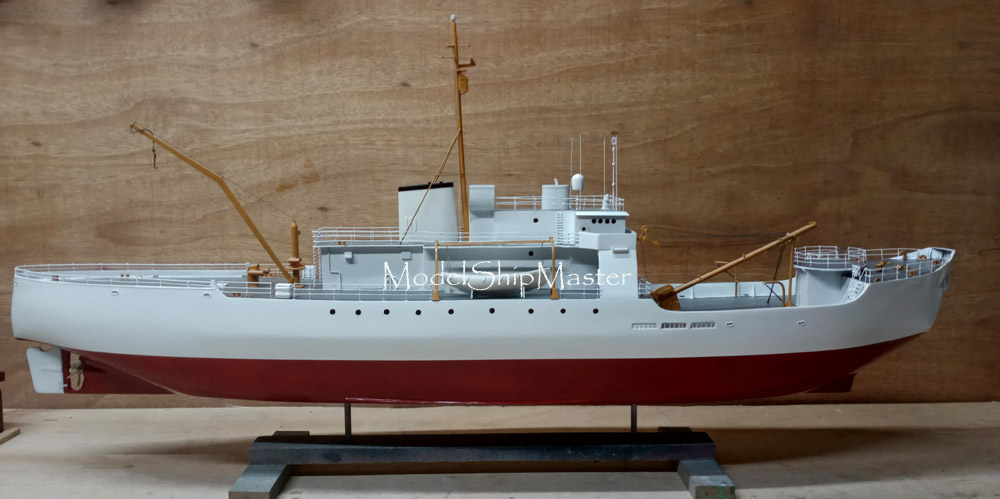
In the summer of 1957, the Coast Guard ship Storis started a historic
journey. She departed in company with the Coast Guard
buoy tenders Spar and
Bramble to
establish and
chart a successful path through the Northwest Passage
in response to Cold War
tensions with the Soviet Union. They were to search for a
sea route deep enough to support larger, deeper draft
cargo ships. Gaining a better understanding of ice
floe movements and transiting through them without
sustaining severe damage or getting stuck in the ice
pack was critical for future shipping activity in this
region.
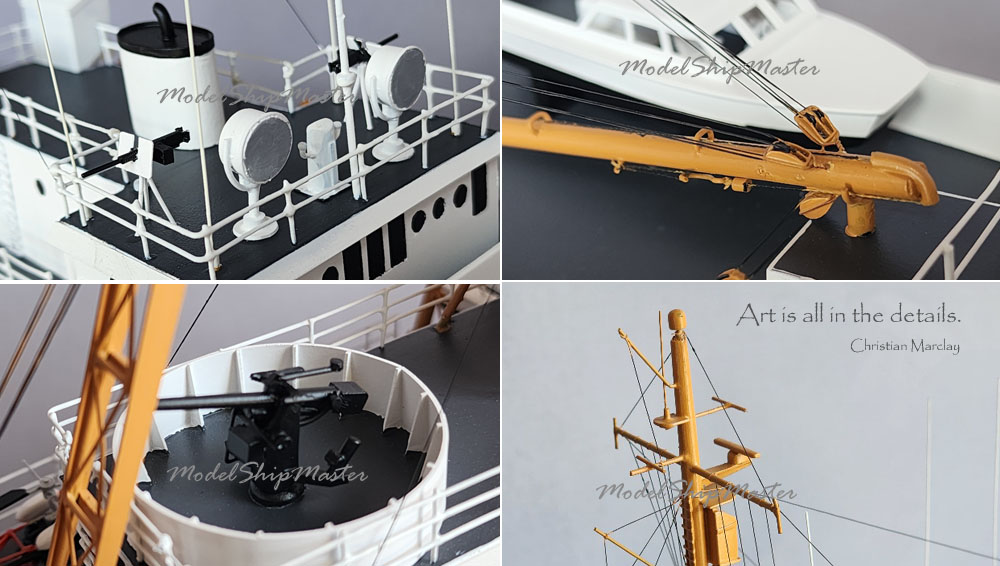
On July 1, 1957, Storis departed Seattle in company with
Coast Guard buoy tenders Bramble and Spar to search for
a deep draft channel across the Arctic Ocean and collect
hydrographic information. While in Franklin Strait, the cutters became
trapped in an ice floe field for a number of days before
Spar freed itself and then helped the other vessels
reach clear water. During this time, the cutters
continued to leave moored buoys to mark
future shipping lanes.
On
September 6th, Storis, Spar, and Bramble became the
first deep draft ships to sail through the challenging
seventeen-mile passage in the Bellot Strait. By October,
all three cutters had reached their respective homeports
and thus went down in history as the first American
vessels to transit through the icy seas of the Northwest
Passage and circumnavigate the North American continent.
This historic transit ended a 450-year search for the
Northwest Passage.
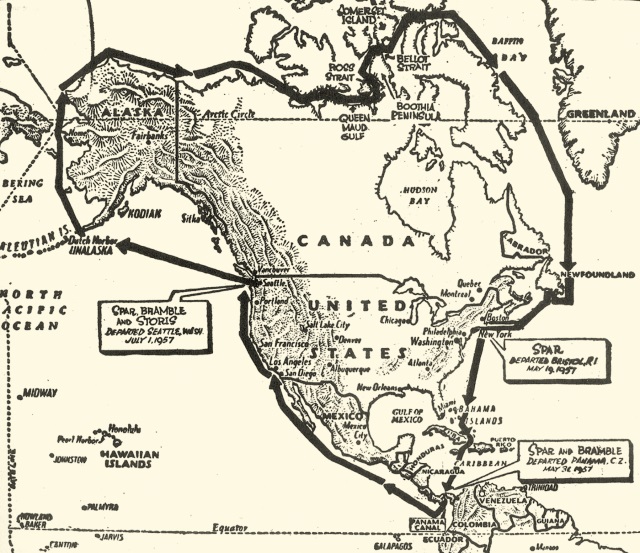
In World
War II, the Coast Guard icebreaker Storis participated in the Greenland
Patrols. She patrolled the east coast of Greenland to
prevent the establishment of German weather stations.
Following
the war, on 15 September 1948, cutter Storis was reassigned
to Juneau, Alaska where she participated in the Bering
Sea Patrol, which entailed
delivering medical and judicial services to
isolated native villages in the far reaches of the
territory. At the same time, Storis assisted in
establishing Alaskan LORAN radio-navigation stations,
provided supplies for the Distant Early Warning Line and
conducted hydrographic surveys in the uncharted waters
off the Arctic.
In 1972, the Coast Guard ship Storis underwent a major renovation converting
her from an icebreaker to a medium endurance
cutter. The primary functions of Storis shifted to
enforcing laws and treaties of the domestic and
foreign fisheries in the Bering Sea and Gulf of Alaska. Storis underwent
another major maintenance overhaul in 1986 that replaced
her power plant and expanded her living quarters to
include a new berthing area for women and a lounge for
the crew.
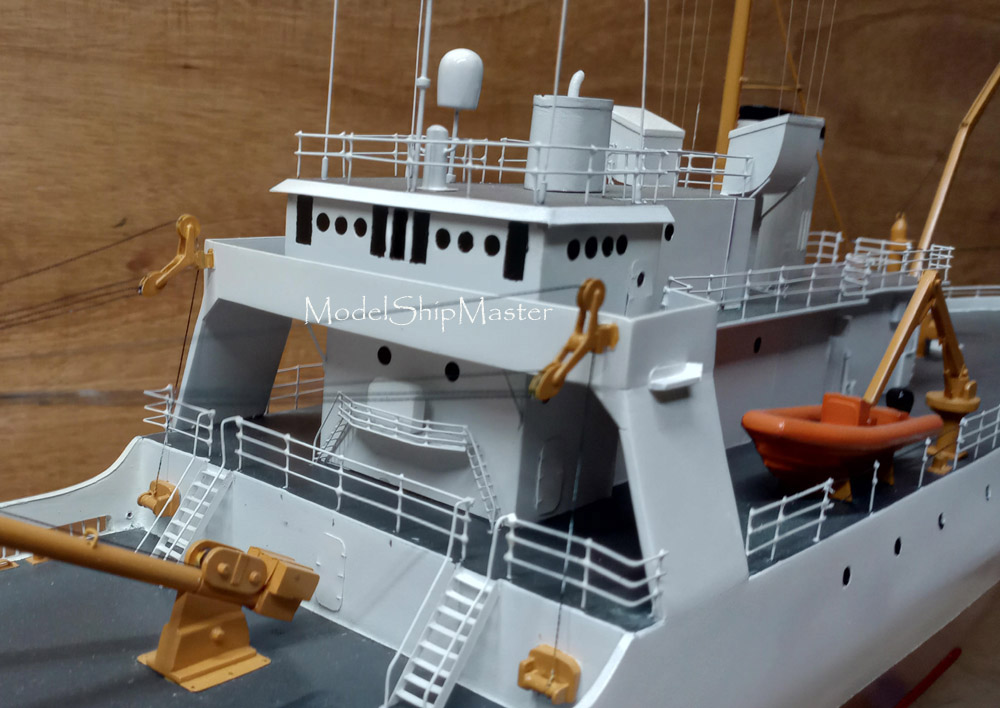
In the
1990s, Coast Guard cutter Storis continued to set
records. In 1990, in a rescue made famous by television
and film, she responded with a Coast Guard HH-3F Pelican
helicopter to the sinking fishing vessel Alaskan Monarch
which is trapped in ice on the rocks of St. Paul Island.
In the fall of 1992, Storis called at the Russian port
of Petropavlovsk on the Kamchatka Peninsula. This was
the first entry of a foreign military vessel into that
port since the 1854 Crimean War, when British and French
vessels attempted to seize it.
In 1991, Storis received the mantle of oldest
commissioned cutter in the fleet. She held the
distinction of “Queen of the Fleet,” until Feb. 12, 2007
when she was decommissioned, proudly displaying her gold
“38” hull numbers for 17 years. In her 64 years and 5
months of active service, USCGC Storis had
steamed longer and farther than any other Coast Guard
cutter. Storis’ remarkable career included 250 lives
saved, 25 vessels saved, 7,500 vessels boarded, and
100,000 people assisted in remote areas.
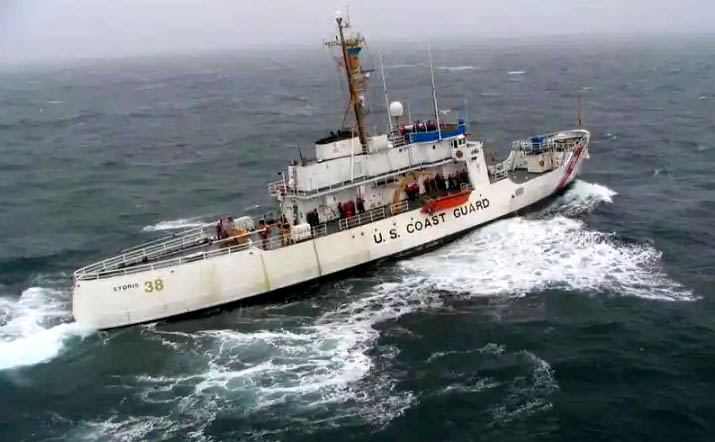
This Coast Guard
Storis model is 32" long (HO 1/87 scale.) It depicts
the ship at the time of her historic Northwest
Passage voyage.
This model is in stock and
will be shipped within five business days. Email
us for price.
We also build the Storis
at her
decommissioning, when her number was gold.
We'd love to build for
you an ice water scenic base that shows the
three historic ships Storis, Spar, and
Bramble during their Northwest Passage voyage.
just let us know.
If you are looking for
a model of the newer Storis, it is located
here.
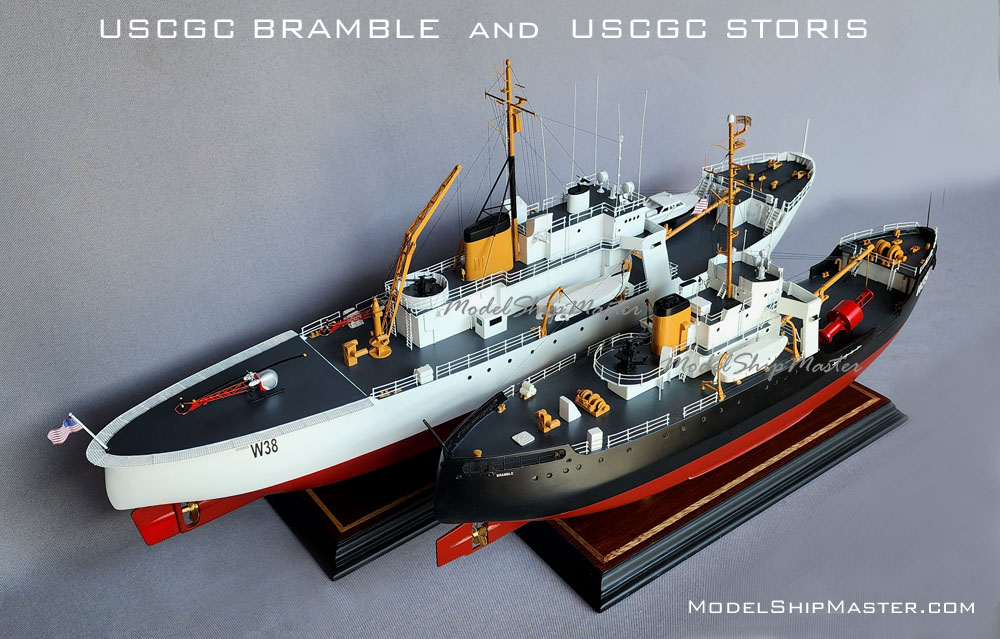
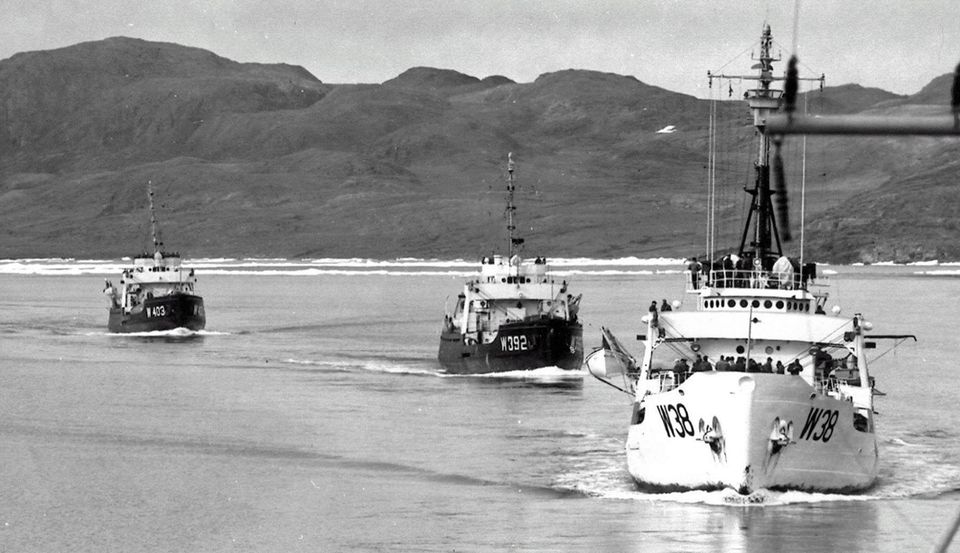
Learn more about the Coast
Guard ship
STORIS here:
https://en.wikipedia.org/wiki/USCGC_Storis
https://www.mycg.uscg.mil/News/Article/3628183/the-long-blue-line-first-us-transit-of-the-northwest-passage-1957/
|